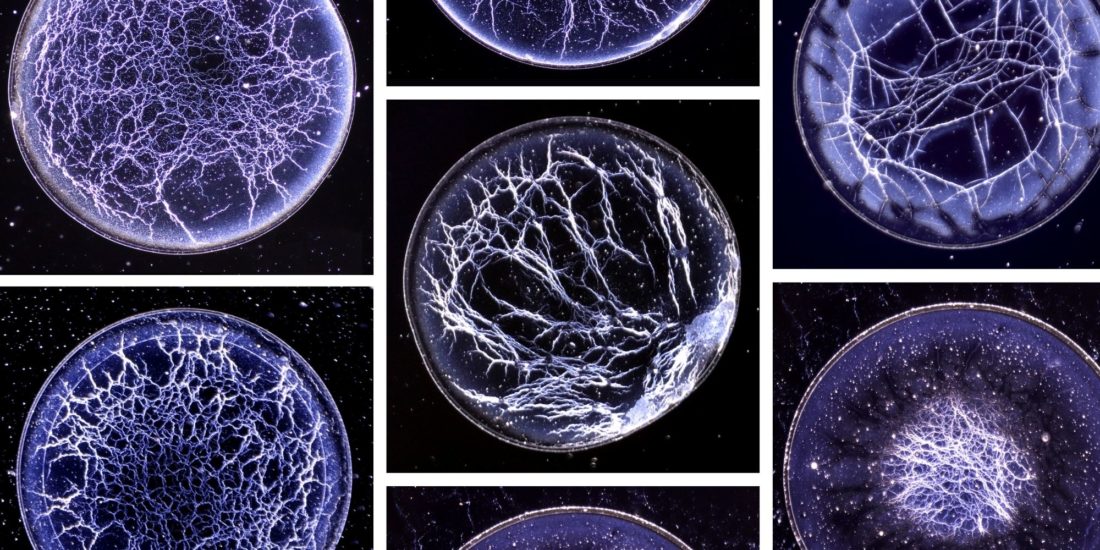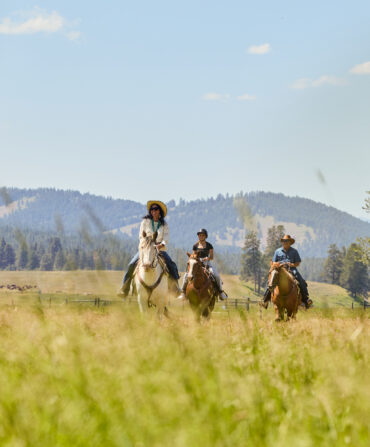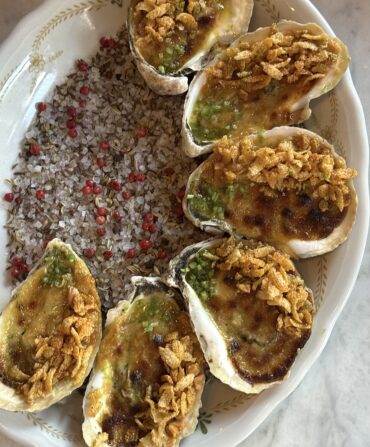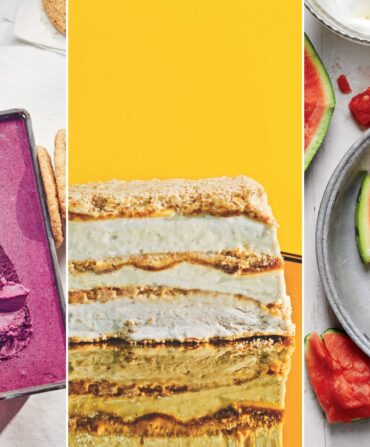Like a good Southerner, when Stuart Williams arranged to spend his sabbatical studying with professor Orlin Velev at North Carolina State University in 2017, he didn’t show up empty handed. Rather, Williams, an associate professor with the University of Louisville’s J.B. Speed School of Engineering, arrived with a case of Kentucky bourbon tucked under his arm. This bourbon wasn’t just for sipping, however, but for science.
Williams, who studies fluid dynamics, wanted to take a deep dive into the mechanics of colloids, a specialty of professor Velev’s. A colloid is a mixture in which tiny, insoluble particles are evenly distributed throughout another substance. Smoke and fog are both colloids, for example, as are coffee, tea, and milk. And, as Williams had recently learned while visiting with researchers at the spirits company Brown–Forman, who had also gifted him the bourbon, so is whiskey.
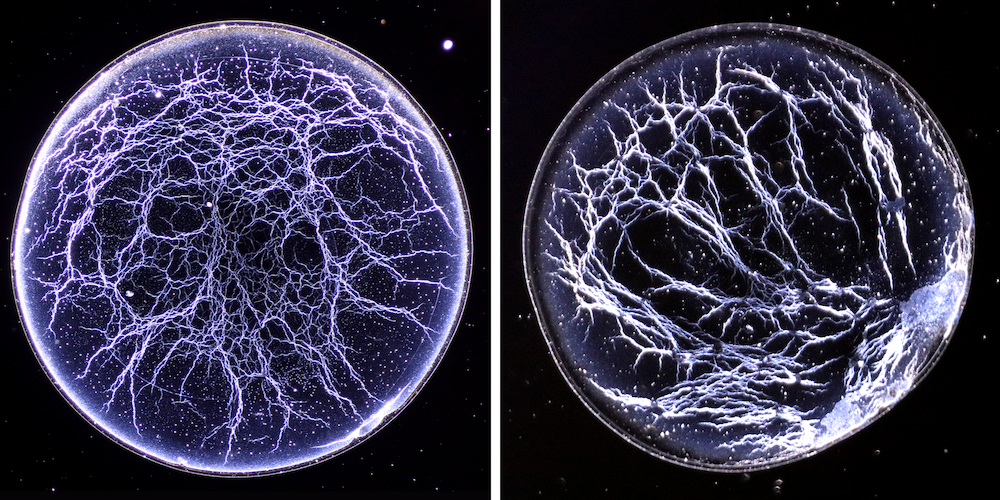
Williams and Velev got to work by letting raindrop-sized samples of bourbon evaporate on glass slides and examining the results under a microscope. While particles in coffee and tea migrate to the outer edge as the liquid evaporates—the so-called coffee-ring effect—the bourbon left behind a uniform film. This was not surprising, as a previous study had shown that Scotch behaves the same way. But when they diluted the bourbon to about 40 proof, curious web-like patterns formed.
“Dr. Velev hadn’t seen anything like this before,” Williams says. “When someone with his experience says, ‘Hey, that’s interesting,’ you tend to perk up.”
They repeated the experiment with a variety of samples, including clear, unaged distillate and Scotch, along with several dozen bourbons and other American whiskies. Only the aged, American-made samples formed “whiskey webs,” as they began calling them. Moreover, different brands formed distinct and repeatable patterns. “Like snowflakes, no two are exactly the same, but we started noticing, ‘Oh, this one has voids on the perimeter, or this one resembles a tree,’” Williams says. “Let’s put a computer algorithm to this and see if we can’t come up with something like a digital fingerprint.”
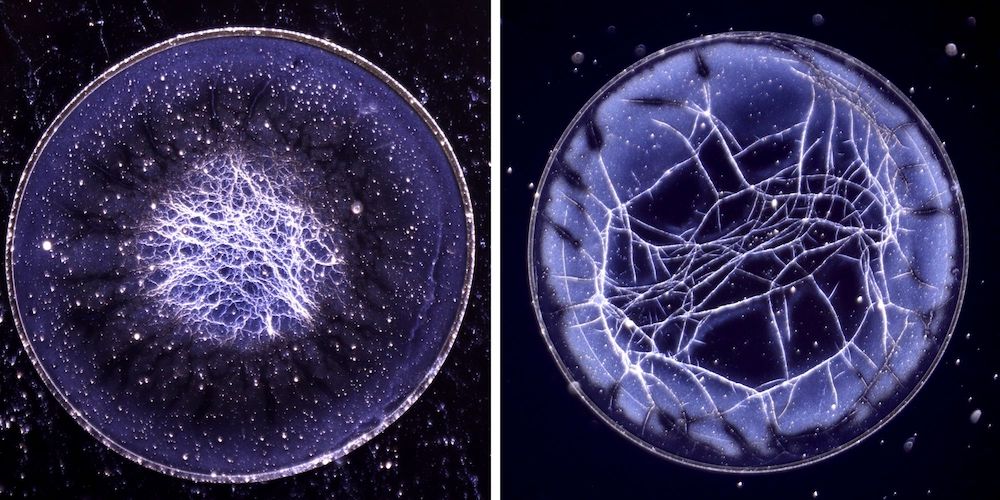
The secret behind this phenomenon, the scientists surmised, lies in the barrel. While Scotch and a majority of the world’s whiskies are aged in used barrels, bourbon can only be matured in new, charred white oak containers. Like a tea bag, first-use barrels impart maximum extraction of color, flavor, and aroma. They also leave behind about twice the mass of suspended solids, Williams says. As the liquid evaporates, these particles form a thin, molecular skin that maintains its rigidity.
“The features that you see, the web-like streaks and white strands, are actually chemical folds of that skin as it eventually completely evaporates,” Williams says. “Each skin is based on the chemicals that are within the whiskey, and we are finding out that the chemicals themselves, or at least the chemical composition of the skin, is directly related to its mechanical properties.”
In other words—science! And also art, as the whiskey webs themselves are captivating. Williams entered a large-scale reproduction of one of his favorite patterns, Maker’s Mark Cask Strength bourbon, into a science-related art show, where it won a people’s choice award. Aficionados can also purchase their favorite whiskey web pattern printed on an aluminum canvas or on coasters, proceeds from which are used to support further research.
Possible industry applications include detecting counterfeit bourbons from the real McCoy, or at least the ability to tell whether a whiskey has been aged in a new, charred oak barrel or not. Williams also spent part of quarantine working on a portable kit that could be used for quality control spot checks. Companies working on technology to speed up the aging process have also expressed interest, he says. And the research could have applications beyond spirits. Discovering a way to measure or strengthen these chemical layers, say within a human lung, could also help advance medicine.
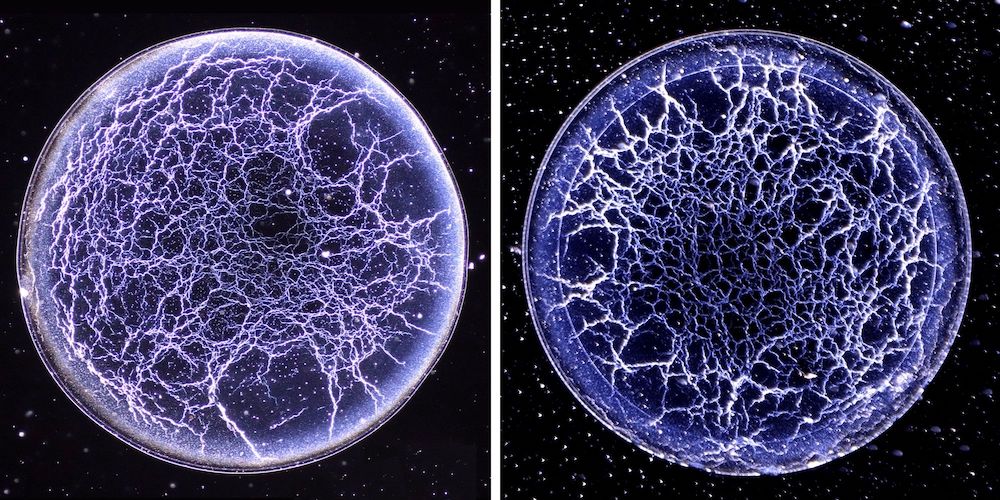
“It’s not going to compete with the sensitivity of gas or liquid chromatography, but the science is definitely complex and, I think, intriguing,” Williams says. “Could we leverage it for other parts of the food industry or even human health?”
Like maturing a fine bourbon, only time will tell.
For more information and to order prints, go to whiskeywebs.org.


